|
|
NYSG's Social Media Review: Early November 2017
By Paul F on Nov 3, 2017 at 4:30 PM
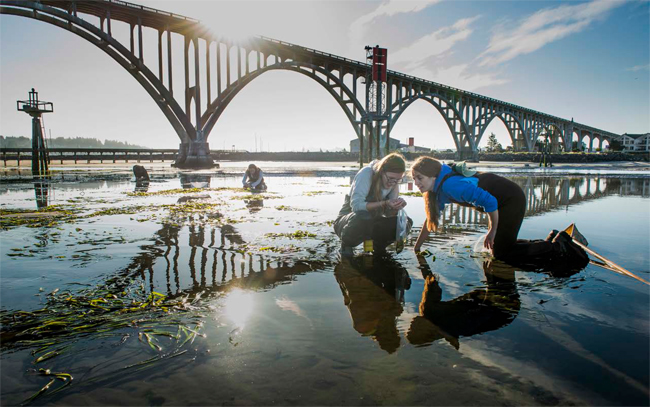
How Sea Grant Benefits You? "Sea Grant has been working with a wide assemblage of partners to support New York's coastal communities, businesses and residents for five decades now," said New York Sea Grant Director William Wise. "Thousands of New Yorkers have benefited over the years from Sea Grant programming in such areas as fisheries, aquatic invasive species, coastal tourism and coastal community resilience."
"Sea Grant has served and continues to serve a wide variety of coastal stakeholders," said Suzanne "Suky" Cannon, a U.S. Coast Guard 100GT Master Mariner Captain. "New York Sea Grant conducts workshops and trainings vital for over 114,000 boaters, recreational fishing-related businesses, and anglers annually."
Learn more about how Sea Grant is a smart investment in our nation's coastal economy from the stakeholders we serve and the organizations we partner with. This includes links to many "Sea Grant: By The Numbers" fact sheets and Web resources as well as stream-able audio and video clips that help to illustrate why for over 50 years, the National Oceanic and Atmospheric Administration's National Sea Grant College Program has been putting science to work for America's coastal communities MORE >>
Top 14 Trending News Stories from NOAA's New York Sea Grant (NYSG) ...
(1) JOB OPPORTUNITY >>> NYSG is currently looking to hire a freelance publicist to work with our program's six (and counting) coastal science extension specialists located on Long Island, in New York City and within the Hudson Valley. See the job description at http://ow.ly/SXIK30gaHjC and submit resume, cover letter and writing samples to Paul C. Focazio, Interim Communications Manager, New York Sea Grant at Paul.Focazio@stonybrook.edu.
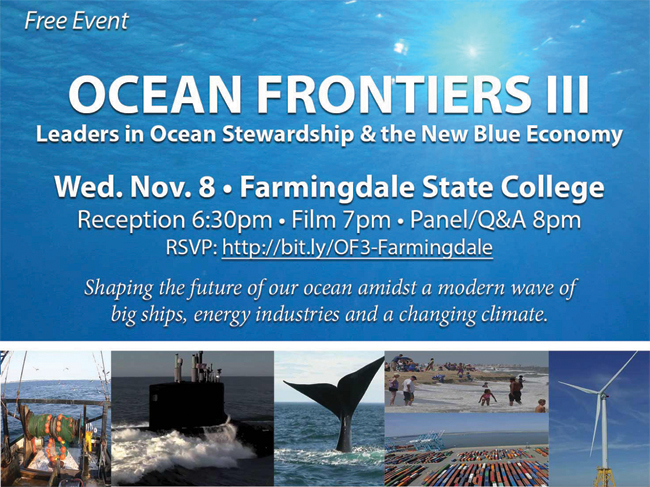
(2) MOVIE SCREENING >>> On November 8th, Long Island-ers will get an opportunity to see a free screening of Ocean Frontiers III
at Farmingdale State College. Produced by Green Fire Productions, the
film chronicles recent efforts along the Eastern seaboard to plan for
healthy oceans, robust ocean economies and a sustainable future.
Following the viewing, which NYSG is supporting as a co-sponsor, a panel
discussion featuring local and regional experts will discuss some of
the conflicts faced in New York's ocean use. These include soaring
demands for offshore sand mining and proposed wind energy development,
support for thriving fishing and recreation industries and the
environment being home to endangered whales and sea turtles.
For a list of upcoming Ocean Frontiers III screenings and more information about the film series, visit www.ocean-frontiers.org.
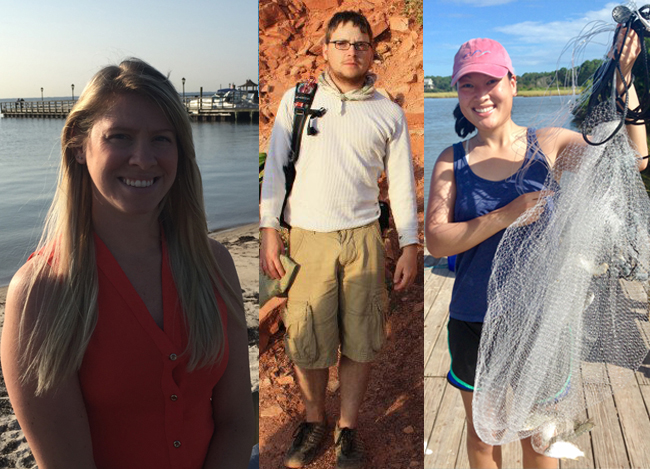
(3) NEW NYSG STAFFERS >>> In their new positions, these Sea Grant extension specialists — (above, l-r) Kathleen Fallon, Roy Widrig and Anna Weshner-Dunning — will look after New York coastlines, work with local communities and conduct outreach regarding hazards (Fallon and Widrig) and stewardship opportunities (Weshner-Dunning). MORE >>
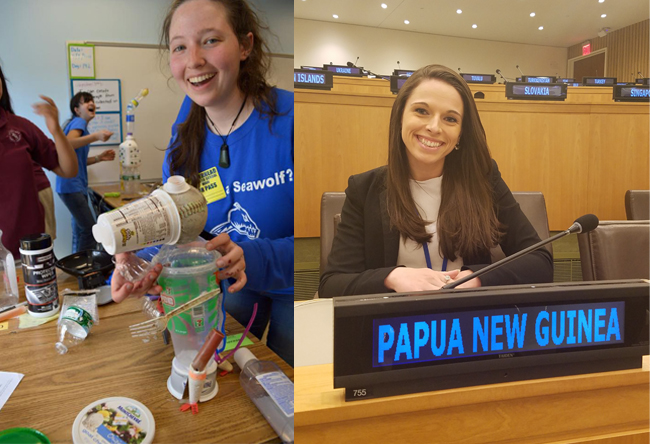
(4) KNAUSS FELLOWS IN D.C. >>> During a mid-November "placement week" in Washington D.C., Emily Markowitz (above, at left) and Ashley Stilson (at right) will be among 2018's 61 nationwide finalists in this prestigious fellowship program assigned to jobs in either the executive or legislative branches of the federal government. Since 1979, Sea Grant has provided over 1,200 early career professionals with first-hand experiences transferring science to policy and management through one year appointments with Federal government offices in Washington, D.C. Knauss alumni go on to have prospering careers in all sectors of society. MORE >>
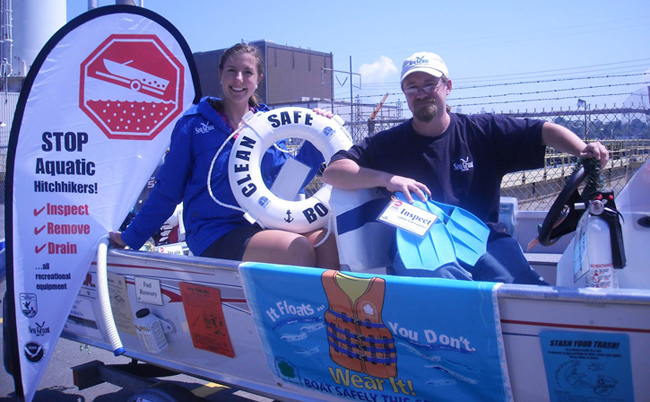
(5) WATERCRAFT INSPECTION WEBINARS >>> Our Fall 2017 webinar series, which got underway in mid-October, offers watercraft inspection program leaders and those interested in developing a program the opportunity to learn about exciting, recent advances in aquatic invasive science. There are video recordings from the webinars held so far and info on the fourth and final discussion (register encouraged), slated for November 10th MORE >>>

(6) SURVEYS ON LAKE ONTARIO REGION FLOODING >>> This past spring brought historic water levels that many communities have seen along the Lake Ontario shore — throughout Jefferson and Niagara Counties. Flooding impacted public lands, private land owners, the rental market and marinas and other recreational businesses that bring millions in revenue to the region. In response, throughout summer 2017 Cornell University investigators leading a NYSG-funded study surveyed property owners in an attempt to identify areas that are most vulnerable to high water levels and inform future community flood risk planning. MORE >>
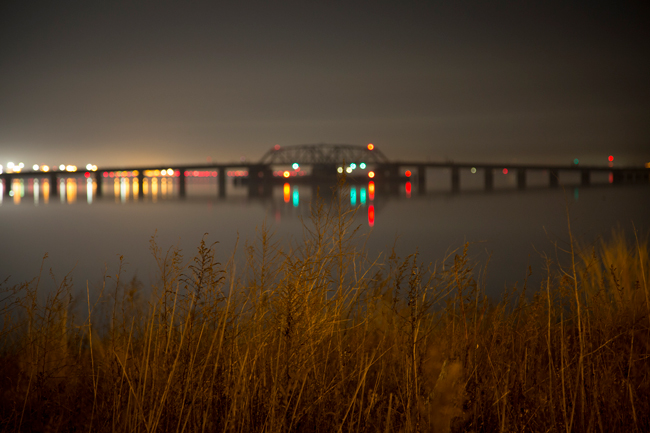
(7) JAMAICA BAY PODCAST >>> Stream or download the fifth and latest in our podcast series, which focuses personal perspectives on what it's like to live or work in New York's Jamaica Bay region. This one, on horseshoe crabs, was released in October. MORE >>
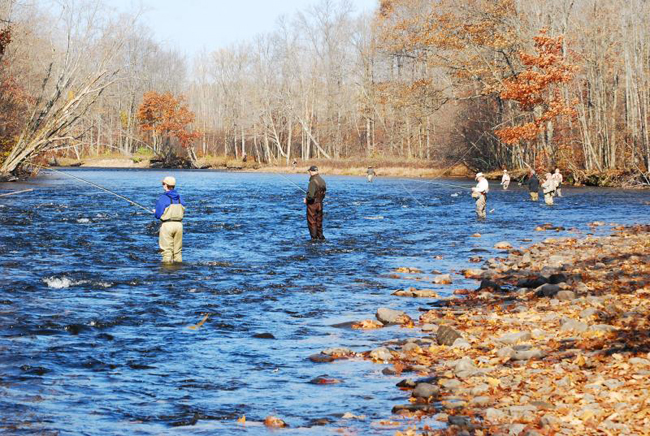
(8) ID-ING TROUT AND SALMON >>> As pointed out in a early November post on The Reel Angle blog, there can be enough variation in Salmonids in the Great Lakes Basin that identification can be a challenging task. That's why NYSG created the colorful Salmon and Trout of Lake Ontario – A Visual Identifcation Guide (pdf).
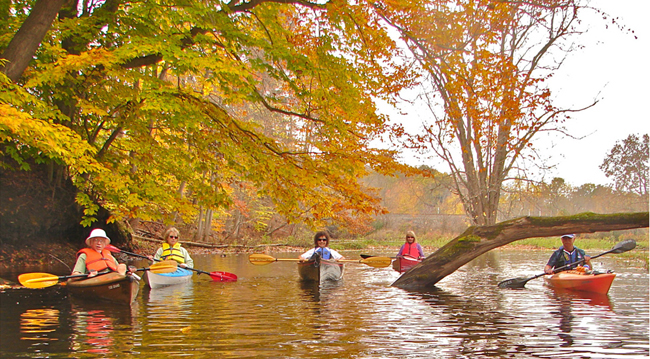
(9) COOLER WEATHER, WATER SAFETY >>> Our program offers its annual reminder about life vests that are required to be worn by State law starting November 1 but are a good idea whenever the weather turns cooler. MORE >>
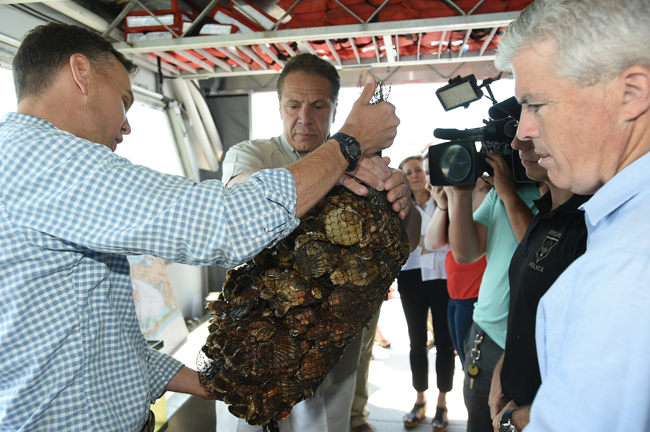
(10) WARMER WEATHER, ALGAE IN LI'S BAYS >>> "2017 has been one of the worst years for brown and red tides," said Dr. Christopher Gobler (above, at far left, alongside, l-r, Governor Andrew M. Cuomo and Suffolk County Executive Steve Bellone). "Conversely, blue-green algal blooms have been mild thus far," added Gobler, a Associate Dean for Research and a professor at Stony Brook University's School of Marine and Atmospheric Sciences.
In late summer, a Harmful Algal Blooms Action Plan for Suffolk County was released, capping a year-plus-long effort with assistance from, among others, NYSG Director William Wise. MORE >>
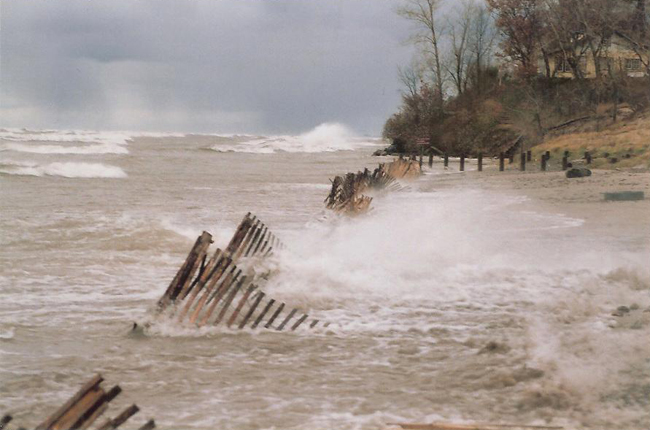
(11) RESILIENCY WORKSHOP IN NY'S GREAT LAKES >>> Pre-registration is required by November 7th for this training in Batavia, NY, in which attendees will participate in interactive scenario-building and decision-making exercises and
develop response strategies to better prepare for impacts on natural and
built environments during extreme weather events and other community
challenges. MORE >>
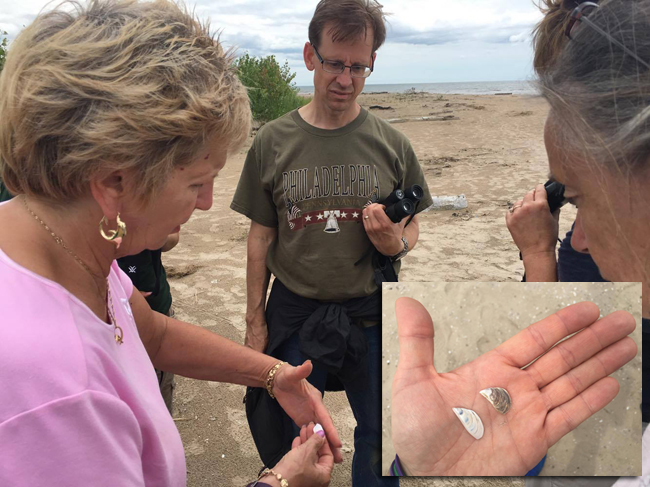
(12) EDUCATING WITH GLEEE >>> We partnered with the New York State Department of Environmental Conservation (NYSDEC) to officially launch Web resources in October for K-12 teachers and environmental educators related to the "NY Great Lakes Ecosystem Education Exchange (GLEEE) Program" MORE >>
ALSO: To get a better idea of the kinds of training offered through GLEEE, we snapped photos and took notes this past July during a two-day "A-Z Education Workshop on Lake Ontario" MORE >>
AND: The visitor center at the Salmon River Fish Hatchery in Altmar, NY was under construction when NYSG visited during its "A-Z Education" workshop this past summer. NYSDEC announced the completion of the renovations in early November. More >>
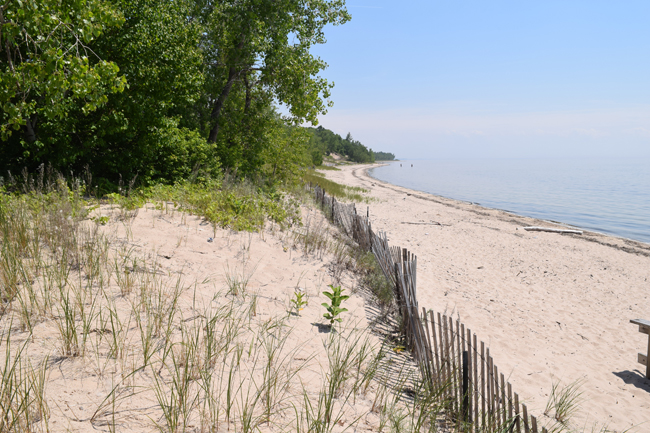
(13) SMALL GRANTS, BIG BENEFITS >>> In September, we (along with NYSDEC) announced nearly $200K in grants for a new wave of Great Lakes Basin Projects. The eight community-based projects funded aim to conserve and restore native wildlife and habitats, improve water
quality and increase resiliency in a number of targeted coastal areas. MORE >>
An example of a recently-completed small grants project is CurrentCast, which generated twenty 60-second audio "info bursts" on Great Lakes issues including protecting pets from algal bloom, Great Lakes rip currents, lakefront landscaping, the Erie Canal, invasive species, microbeads and coastal education. MORE >>
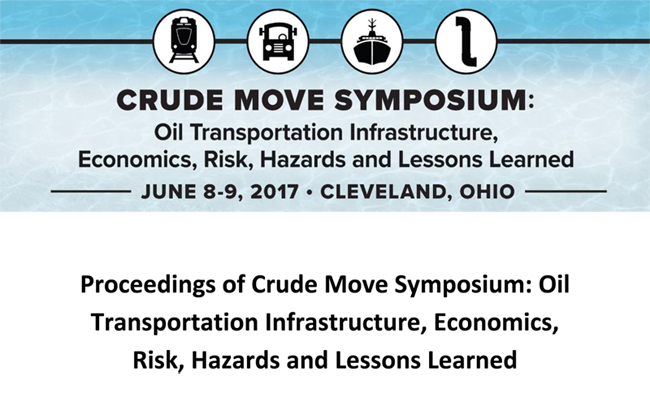
(14) A CRUDE MOVE >>> How does crude oil move through the Great Lakes Basin? New resources — including proceedings and video clips, detail the discussions from a June symposium on the topic. “We determined that with the increase in oil
movement in 2014, we really needed to understand the pros and cons of
the modes, and how the different modes of transport interact with each
other,” said NYSG Associate Director Kathy Bunting-Howarth. A surprising conclusion from many of the participants: transporting oil
by pipeline might be one of the safest methods that exist right now.
Top 12 Trending News Stories from NOAA and Sea Grant partner organizations ...
(1) NOAA IN THE GREAT LAKES >>> The NOAA Great Lakes Regional Collaboration Team (GLRCT) launched this short video, which highlights the agency's freshwater mission and work in the Great Lakes region. Included is an overview of key programs and partners involved in achieving NOAA’s mission of Science, Service and Stewardship for the largest freshwater system on Earth.
(2) JOB OPPORTUNITY >>> The Northeastern IPM Center (NEIPMC) has begun a search for a new director. "The need for IPM has never been more important and the NEIPMC has continued to fund/support the diversity of projects that result in the adoption and development of sustainable pest management throughout the region," said Steve Young, who will be stepping down as director on December 31, 2017 in order to take a faculty position at Utah State University.
Applications for the NEIPMC Director position will be reviewed starting November 15, 2017, with an anticipated starting date of January 1, 2018. See the full position description. MORE >>>
(3) WINTER IS COMING >>> It might be early fall, but it’s never too soon to be prepared, so NOAA’s National Weather Service issued it’s 2017-18 Winter Outlook in mid-October. NOAA forecasters predict a cooler, wetter North and a warmer, drier South this winter. NOAA’s Mike Halpert explains more in this video from NOAAClimate.gov.
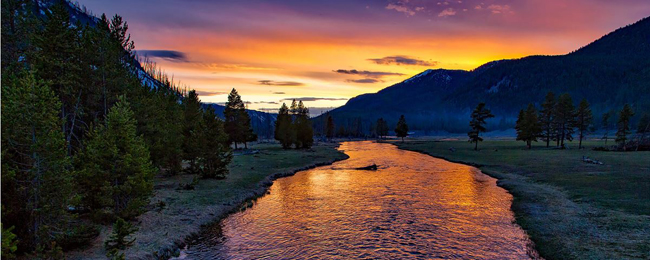
(4) U.S. & GLOBAL CLIMATE, DROUGHT STATS >>> Abnormal dryness and drought are currently affecting over 85 million
people across the U.S., reported the NOAA's National Centers for
Environmental Information - Climate in late October. MORE >>
September was warmer and drier than average for the contiguous U.S, with
the Lower 48 also seeing its third warmest and record wettest first
nine months of the year. MORE >>
As for September's global climate analysis, the Earth experienced its 4th warmest September and 2nd warmest January–September (year to date) in 138 years of record-keeping. MORE >>
(5) SEAFOOD TAG >>> In October, which was Seafood Month, NOAA Fisheries Service's answered the question "Where does your seafood come from?" With the help of QR code tags it's easy to find out. QR code tags trace information including where your seafood was caught, the name of the boat, the name of the fisherman, and recipes on how to cook the fish ...
ALSO: Learn more seafood buying and handling tips from FishWatch.gov.
AND: There's more from NYSG on seafood safety and technology at www.nyseagrant.org/seafood.
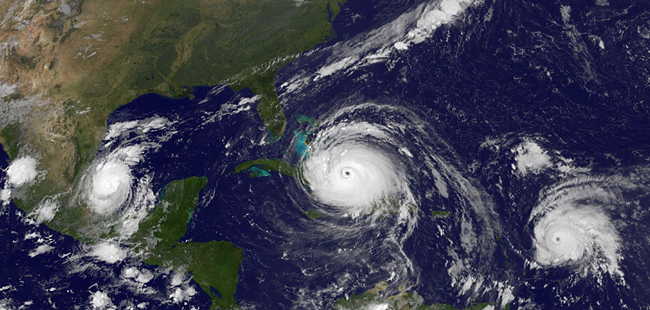
(6) WHIRLWIND OF A SEASON >>> As NOAA's lead hurricane season forecaster Dr. Gerry Bell will tell you, the Atlantic hurricane season is one for the record books. Dr. Bell shares some of the science behind 2017's whirlwind year. MORE >>
ALSO: NYSG has a searchable news archive on hurricanes as well as videos and more from the NOAA Sea Grant Coastal Storm Awareness Program.
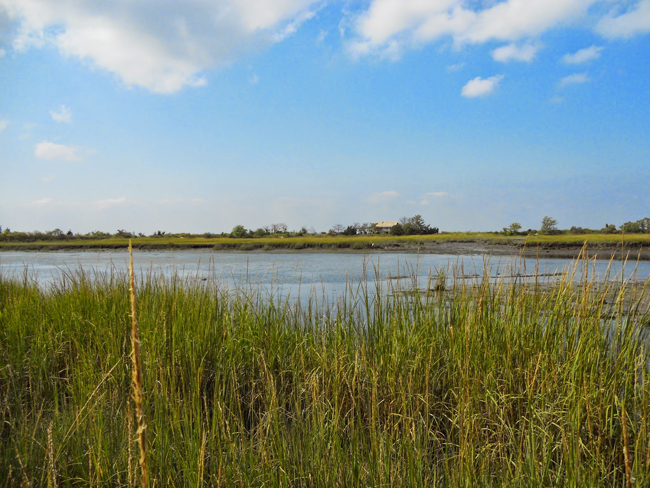
(7) WHAT IS AN ESTUARY >>> In celebration of Estuaries Week, which was in mid-September, check out a brief video from NOAA on these unique waterways where fresh and saltwater mix. MORE >>
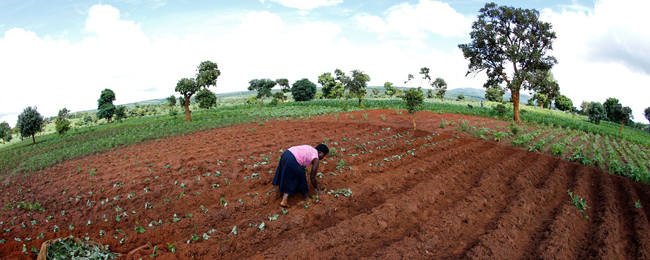
(8) STATE OF CLIMATE >>> 2016 was found to be the third consecutive year of record global warmth, as detailed in the annual State of Climate report. Led by NOAA National Centers for Environmental Information and released by the American Meteorological Society in mid-August, the report is based on contributions from nearly 500 scientists from more than 60 countries around the world. MORE >>
ALSO: In early November, NOAA announced the release of a federal climate science report for the U.S. Detailed in the report are current trends in the climate globally and for the U.S., and projects trends in temperature, precipitation, sea-level rise and Arctic sea ice for the remainder of this century. MORE >>
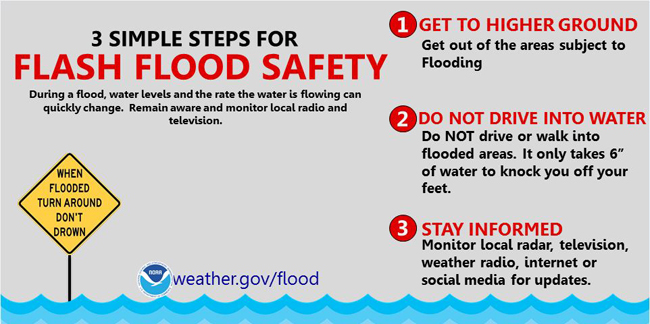
(9) FLOOD PREPAREDNESS >>> During a flood, water levels and the rate at which the water is flowing can quickly change. As seen below, there are some simple steps that you can take to stay safe. And as seen below, the CDC Emergency Preparedness and Response offers some quick tips to keep in mind DURING and AFTER a flood. And for more, visit emergency.cdc.gov/disasters/floods.
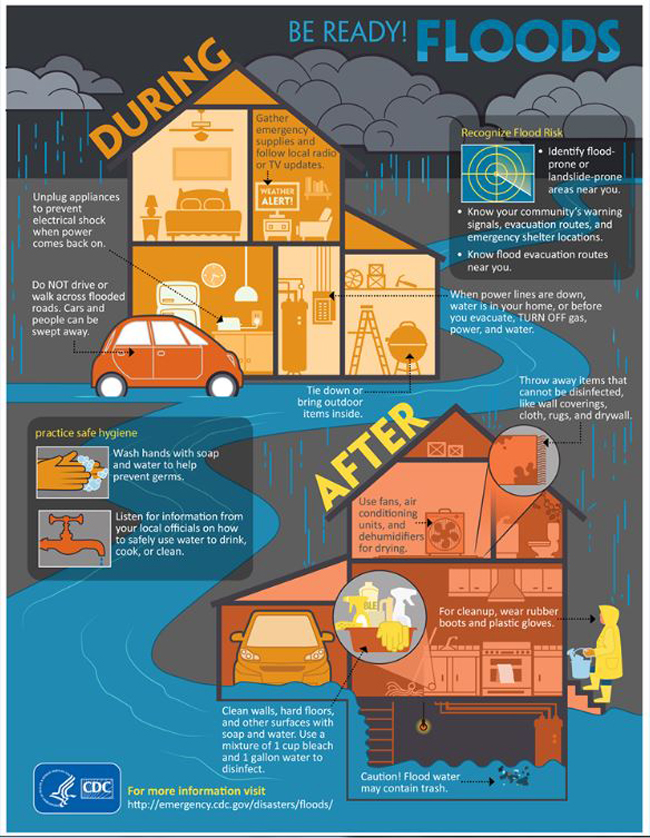
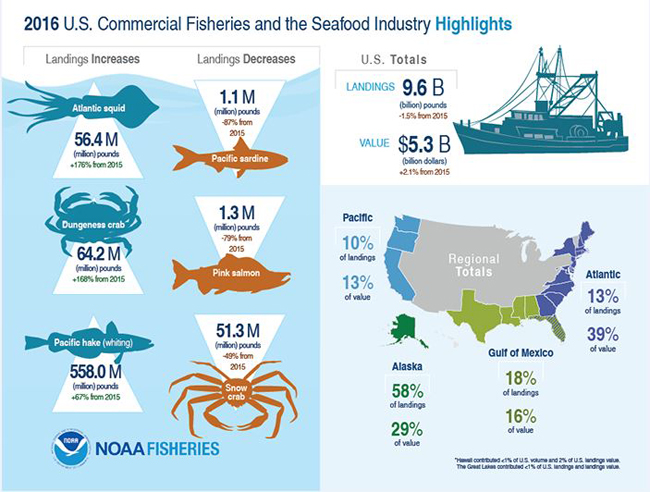
(10) FISHERIES BENEFIT TO U.S. ECONOMY >>> Commercial and recreational fisheries remain a strong contributor to the United States economy, according to NOAA Fisheries Service's annual Fisheries of the United States report, which was released in early November. MORE >>
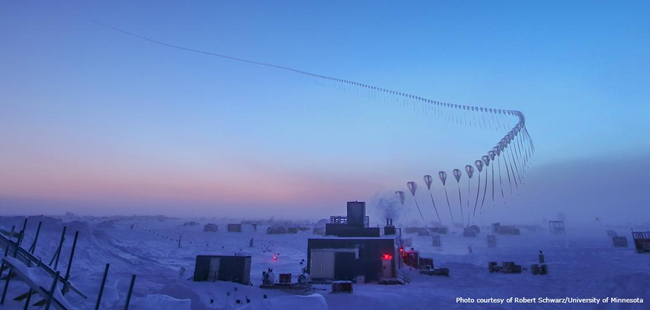
(11) OZONE HOLE IN ANTARCTIC >>> NOAA Office of Oceanic and Atmospheric Research and NASA Earth scientists reported in early November that warm air helped keep 2017 Antarctic ozone hole the smallest in 29 years MORE >>
The time-lapse photo above shows the path of an "ozonesonde" as it rises into the atmosphere in the South Pole. Scientists release these balloon-borne sensors to measure the thickness of the ozone layer. Credit: Courtesy of Robert Schwarz/University of Minnesota.
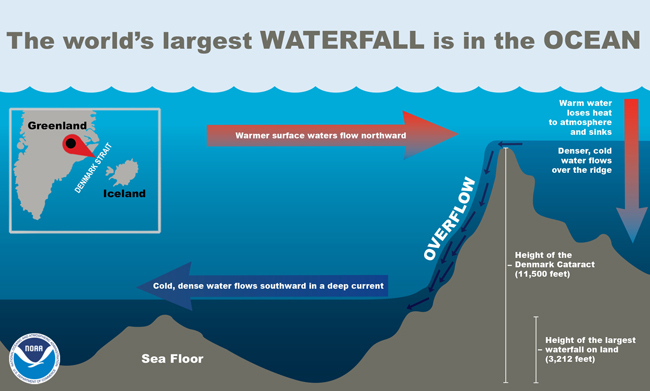
(12) OCEAN FACT >>> How can it be that the world’s largest waterfall is in the ocean beneath the Denmark Strait. It’s because cold water is denser than warm water, and in the Denmark Strait, frigid water from the Nordic Seas meets warmer water from the Irminger Sea. The cold, dense water quickly sinks below the warmer water and flows over a huge drop in the ocean floor, creating a downward flow estimated at well over 123 million cubic feet per second. MORE >>
---
Stay Current with NY Sea Grant ...
- For the latest news from NYSG, check out our 'Currents' section, www.nyseagrant.org/currents.
- Our trending "Topics" — from climate and clean boating to some of the water bodies we focus on (Lakes Ontario and Erie, Long Island Sound, the Hudson River and Jamaica Bay) — are now indexed and searchable via a drop-down feature on all our site pages. They're also listed at www.nyseagrant.org/currentsarchive.
- Check out back issues of both of our e-newsletter, our flagship publication (NY Coastlines / Currents) and our blog and social media-based "Sea Grant Social Media Review."
- Keep tabs on all of NYSG's coastal science news by following us on Facebook (www.facebook.com/nyseagrant), Twitter (www.twitter.com/nyseagrant) and YouTube (www.youtube.com/nyseagrant); Subscribe to our free news feeds (click the orange & white icon in the "Follow Us" navigation bar at www.nyseagrant.org).
|